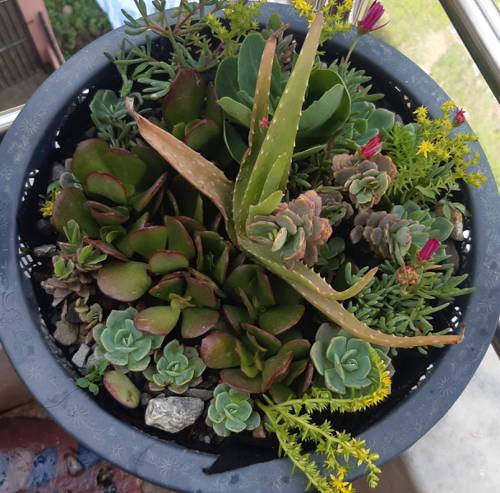
FAQ About Indoor Plant Nomenclature and Identification

What are scientific names for indoor plants?
Scientific names for indoor plants follow the binomial nomenclature system, which consists of two main parts: the genus name and the species name. For example, the scientific name for the Snake Plant is Sansevieria trifasciata. The genus is Sansevieria, and the species is trifasciata.

Why is it important to know the scientific name of an indoor plant?
Knowing the scientific name of an indoor plant is crucial for accurate identification, research, and care. Scientific names provide a universal language that helps to avoid confusion caused by common names, which can vary by region and language. They also provide insights into the plant's characteristics and its relationship to other species.

How can I identify an unknown indoor plant?
To identify an unknown indoor plant, examine its physical features, such as leaf shape, size, color, and arrangement. You can use plant identification apps, refer to botanical books, or consult online plant databases. Uploading clear photos to plant forums where experts and enthusiasts can assist in identification is also helpful.

What is the difference between botanical and common names for plants?
Botanical names are the scientific names assigned using the binomial nomenclature system, while common names are colloquial terms used by the general public. Botanical names are universally recognized and specific, whereas common names can be regional, ambiguous, and sometimes used for multiple different plants.

What are some reliable sources for indoor plant identification?
Reliable sources for indoor plant identification include online databases like the Royal Horticultural Society Plant Finder and the USDA Plants Database. Books such as "The Houseplant Expert" by Dr. D.G. Hessayon also provide valuable information. Additionally, plant identification apps are useful, such as PlantSnap or PictureThis.

Can one indoor plant have multiple common names?
Yes, an indoor plant can have multiple common names. This often leads to confusion as people from different regions may refer to a plant by different names. For instance, Sansevieria trifasciata is commonly known as both "Snake Plant" and "Mother-in-law's Tongue."

How does plant nomenclature work for hybrids and cultivars?
Plant nomenclature for hybrids involves naming conventions that include the names of both parent species, often indicated with an "x". Cultivars, which are cultivated varieties, are named by adding a single quote and the cultivar name. For example, Ficus elastica 'Robusta' is a cultivar of the Rubber Plant.

What tools are available for beginners to identify indoor plants?
Tools for beginners include plant identification apps like PlantNet, which allows users to take photos and compare them to a database of known species. Other resources include online forums, physical guidebooks specifically targeted to houseplants, and social media groups dedicated to plant lovers.

Are there any guidelines for naming a newly discovered plant species?
Yes, naming a newly discovered plant species follows the International Code of Nomenclature for algae, fungi, and plants (ICN). The name must be unique, typically Latin, and published in a professional journal or botanical publication. It often reflects the plant's characteristics or honors a person in the field of botany.

What is binomial nomenclature, and who developed it?
Binomial nomenclature is a formal system for naming species of living things by giving each a name composed of two parts: the genus name and the species identifier. It was developed by the Swedish botanist Carl Linnaeus in the 18th century and is used globally for the scientific classification of species.

How can I learn more about indoor plant naming and classification?
To learn more about indoor plant naming and classification, you can take botany courses online through platforms like Coursera or edX, which offer classes in plant science. Reading resources such as "Botany for Gardeners" by Brian Capon can also expand your understanding of plant taxonomy and nomenclature.

What is a plant genus, and why is it important in nomenclature?
A plant genus is a taxonomic classification that ranks above species and below family. It groups species that are structurally similar or common in some way. The genus is important in nomenclature as it is part of the scientific name and helps convey relationships among species. For example, Ficus is a genus that includes figs and rubber plants.

Can the scientific name of a plant change over time?
Yes, the scientific name of a plant can change over time as botanists gain new insights into a plant's genetics and relationships. Reclassification occurs following advances in DNA sequencing and taxonomical studies, which may reveal previously unrecognized distinctions or connections between species.

Is it necessary to know the Latin language to understand scientific names?
No, it's not necessary to know Latin to understand scientific names. While many scientific names are derived from Latin, they are universally used and recognized in science, often translated or explained in botanical literature and guides. Basic understanding of their structure can suffice for plant identification and care.

How are indoor plants grouped in classification systems?
Indoor plants are grouped in classification systems based on shared characteristics such as morphology, anatomy, genetics, and physiological attributes. These systems use hierarchical categories including family, genus, and species, organizing plants from broadest characteristics to the most specific.

Why might the same indoor plant be sold under different names?
The same indoor plant might be sold under different names due to marketing strategies or regional naming conventions. Retailers may opt for a particular name that appeals to consumers or reflects the plant's aesthetic, care attributes, or origin, leading to variations in common names.

What is the role of a taxonomist in plant nomenclature?
A taxonomist is a scientist who classifies organisms and determines their scientific names. In plant nomenclature, they study the relationships and characteristics of plants to assign correct scientific names and update classifications according to botanical discoveries and technological advances in genetic analysis.

How can misidentification of indoor plants affect plant care?
Misidentification of indoor plants can lead to incorrect care practices, as different species may require specific conditions such as varying light, watering schedules, or soil types. This can result in poor plant health or death if the actual needs of the plant are not met.
